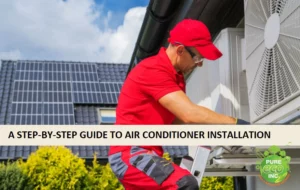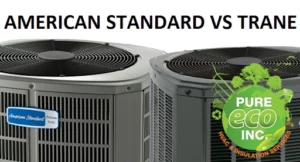A well-insulated home is essential for maintaining comfortable indoor temperatures and minimizing energy consumption. One popular insulation option is the radiant barrier, which is designed to reduce heat transfer through radiation. While radiant barriers offer several benefits, it’s important to understand the potential problems associated with their installation and usage.
This article explores various radiant barrier problems, their causes, and possible solutions to ensure optimal performance and energy efficiency.
Understanding Radiant Barriers
Radiant barriers are materials typically installed in attics, primarily underneath the roof. They work by reflecting radiant heat away from the living space, reducing the amount of heat transferred through the roof into the attic. This, in turn, helps maintain lower temperatures inside the house and reduces the load on the air conditioning system, leading to potential energy savings.
Common Problems Associated with Radiant Barriers
While radiant barriers can be an essential part of attic insulation, they come with potential problems you may want to consider, especially if they are not properly installed.
Moisture problems
Improper installation or inadequate ventilation can lead to moisture accumulation in the attic. Moisture can cause damage to the barrier material, reduce its reflective properties, and promote the growth of mold and mildew.
Air leaks
If the radiant barrier is not installed correctly, it may develop gaps or tears, allowing air to pass through. Air leaks can compromise the barrier’s effectiveness and undermine its ability to reduce heat transfer.
Inadequate attic ventilation
Insufficient ventilation in the attic can trap hot air and moisture, which can impact the performance of the radiant barrier. Proper attic ventilation is crucial to maintaining a balanced and healthy attic environment.
Dust accumulation
Over time, dust and debris can accumulate on the surface of the radiant barrier. This can reduce its reflective properties and diminish its overall effectiveness in blocking radiant heat.
Compatibility with existing insulation
Radiant barriers are most effective when combined with other insulation materials. However, compatibility issues between the radiant barrier and existing insulation can arise, leading to potential performance problems.
Condensation and water vapor
In humid climates or areas with inadequate moisture control, condensation and water vapor can form in the attic. If not properly addressed, these moisture issues can damage the radiant barrier and compromise its performance.
Structural issues
In some cases, radiant barriers may be installed on the underside of the roof decking or in areas with structural elements such as posts or cracks. These installations may pose challenges and require careful consideration to ensure proper application.
Solutions and precautions
Thankfully, none of these problems need worry you if you have entrusted the radiant barrier installation to a professional.
Hiring a qualified contractor experienced in radiant barrier installation is crucial. They will ensure the barrier is correctly installed, without gaps or tears, and in accordance with building codes and best practices and that any potential problems are addressed before they can even manifest.
If you wish to tackle the installation yourself, here is what you need to keep in mind.
Adequate attic ventilation
Prioritize proper attic ventilation to prevent moisture buildup and maintain optimal performance of the radiant barrier. This includes ensuring the presence of soffit vents, ridge vents, or other appropriate ventilation systems.
Moisture control
Implement measures to control moisture in the attic, such as addressing any existing leaks, using vapor retarders on the ceiling, and ensuring proper sealing of the attic floor directly below the living space.
Regular maintenance
Periodically inspect the radiant barrier for any signs of damage, dust accumulation, or moisture-related issues. Clean the surface if necessary and address any identified problems promptly.
Compatibility considerations
When combining a radiant barrier with existing insulation, consult with a professional to ensure compatibility and proper installation techniques for optimal performance.
Consider spray foam insulation
In certain cases, spray foam insulation can be a suitable alternative or complementary solution to radiant barriers. Consult with insulation professionals to explore the best options for your specific needs.
Address structural challenges
If installing a radiant barrier in an area with structural elements or cracks, consult with a contractor to determine the best way.
Addressing Common Problems Associated with Radiant Barriers
Radiant barriers can be effective in reducing heat transfer through radiation and improving energy efficiency in homes. However, it is important to be aware of the potential problems that can arise with their installation and usage. Moisture problems, air leaks, inadequate attic ventilation, dust accumulation, compatibility issues with existing insulation, and condensation are some of the common challenges associated with radiant barriers.
To overcome these problems and ensure optimal performance, proper installation by qualified contractors is essential. Adequate attic ventilation should be prioritized to maintain a balanced attic environment. Regular maintenance and inspections are necessary to address any issues promptly, such as dust accumulation or moisture-related problems. Consulting professionals can help determine the best solutions, including spray foam insulation or alternative methods if structural challenges exist.
By being aware of these potential problems and taking appropriate precautions, homeowners can maximize the benefits of radiant barriers while minimizing any issues that may arise. It is crucial to prioritize energy efficiency, comfort, and the long-term performance of the radiant barrier system to create a more sustainable and comfortable living environment.
Remember, if you encounter any concerns or are unsure about radiant barrier installation or maintenance, it is always recommended to consult with professionals who specialize in insulation and energy efficiency. With proper attention and care, radiant barriers can continue to be an effective solution for improving energy efficiency and comfort in homes.
Call Pure Eco Inc. today at (877) 870-7998 and ask for your free radiant barrier installation quote. Don’t forget your free Home Comfort Estimate!





